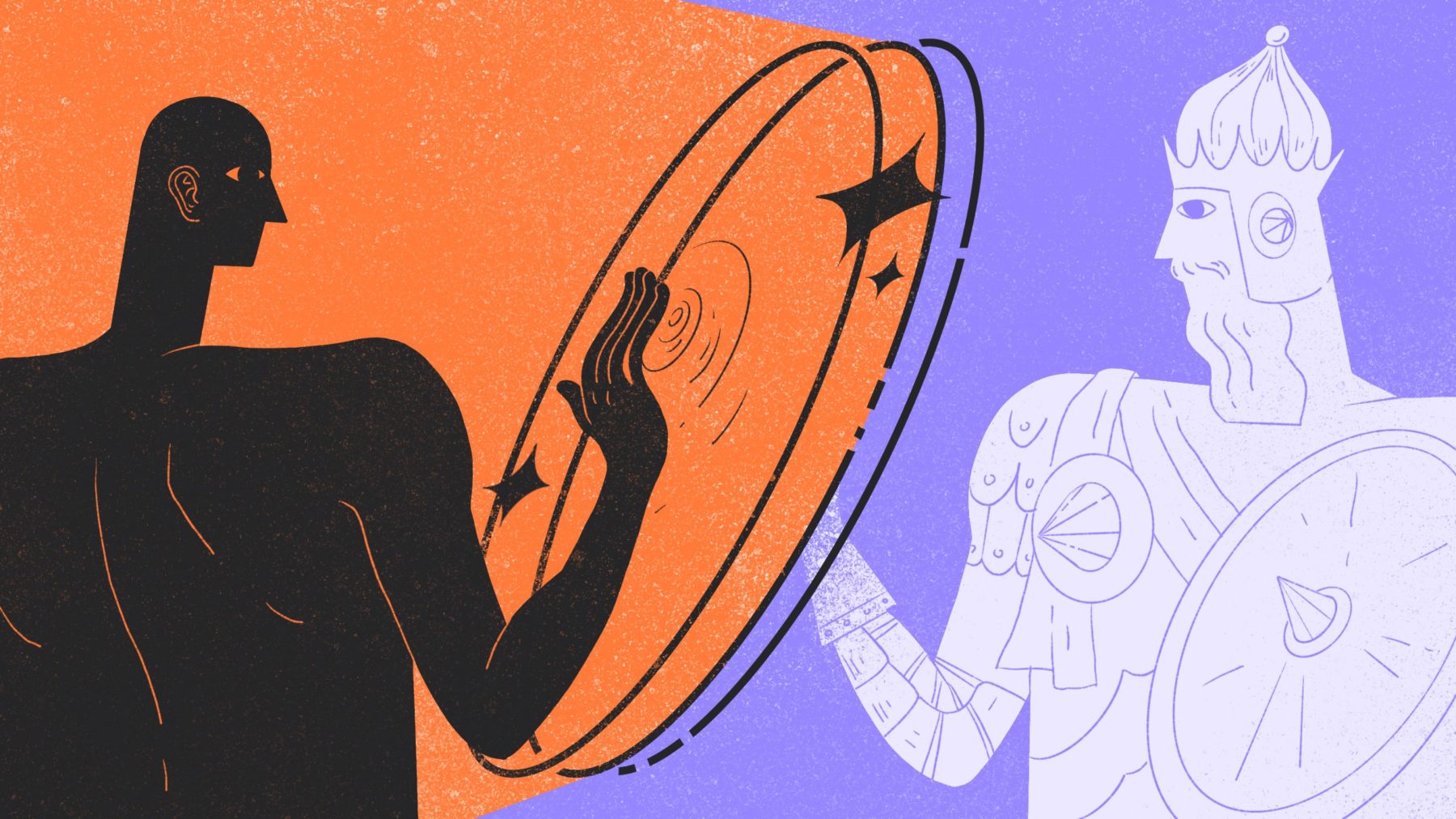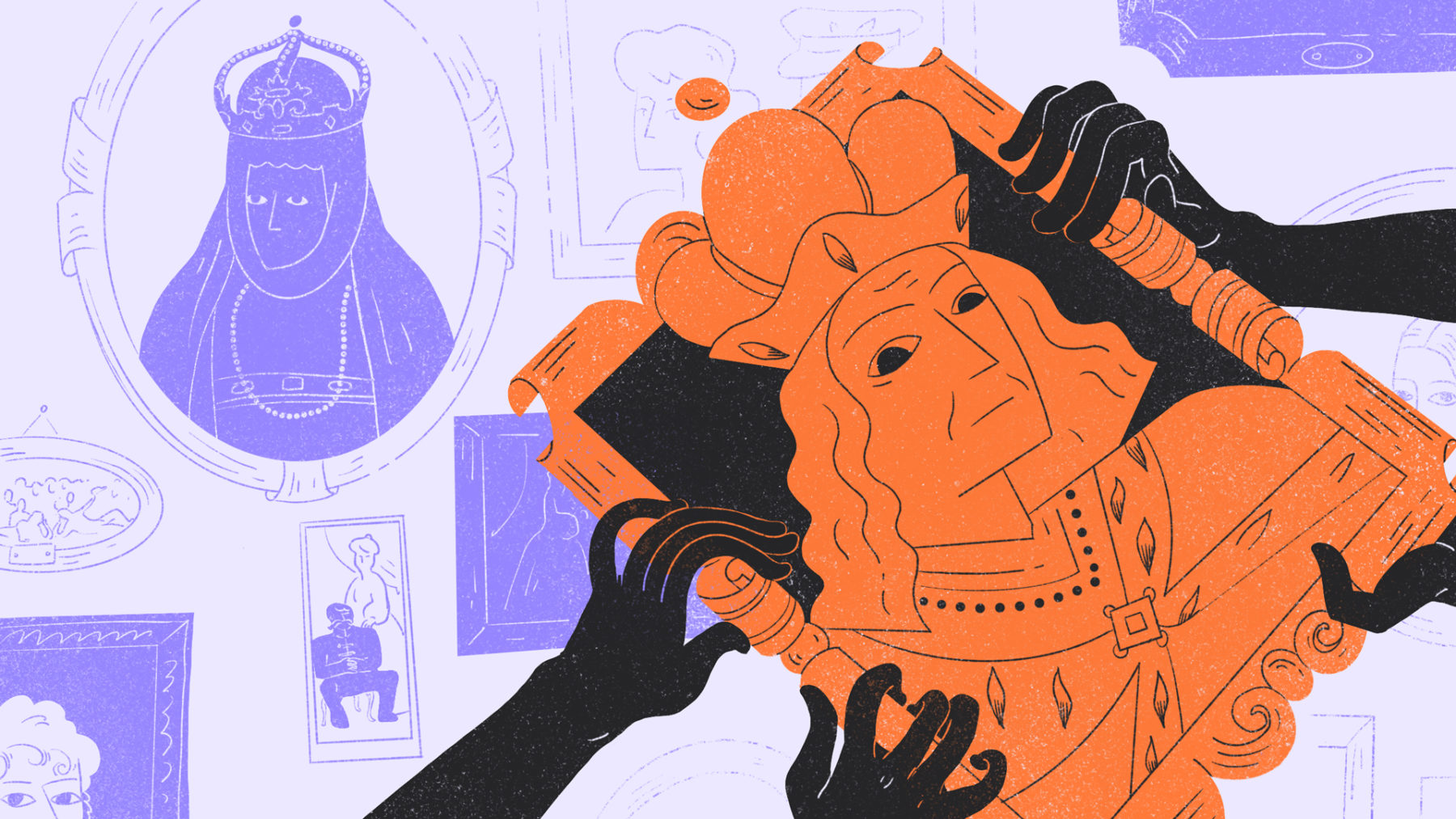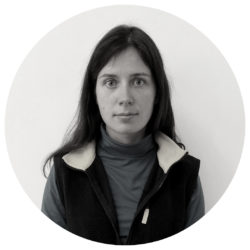Medieval history powers a crisis of identity in Lithuania and Belarus
BY DAIVA REPEČKAITĖ
ARTWORK BY KATE SAPOTSKA/KARGI STUDIO
26 JULY, 2022
For Lithuanians, their country’s medieval history has been a source of pride, pageantry and identity. The Grand Duchy of Lithuania was a cosmopolitan, multi-ethnic, multilingual state that sprawled across swathes of the Baltics and eastern Europe, including modern-day Lithuania, Belarus, and parts of Poland, Latvia, Ukraine, Moldova, and Russia.
The Big Idea: Battling history
Governments rewrite history to further their political goals. School boards insist on rewritten history textbooks to elevate elite groups or privilege favored narratives. But unsavory motives are only one aspect of the rewriting history project. Other impulses are noble, idealistic, and sincere.
Its heyday, historians agree, was in the late 14th century and through much of the 15th century before the Union of Lublin in 1569 formalized a Polish-Lithuanian Commonwealth.
Small as Lithuania is, compared to the Grand Duchy of Lithuania, it considers itself, and has broadly been considered to be the keeper of the Grand Duchy’s historical legacy. Lithuania’s coat of arms and its euro coins feature its iconic knight mounted, sword aloft, on a charging warhorse.
The Lithuanian journalist Vaidas Saldžiūnas remembers going into a souvenir shop on a trip to neighboring Belarus and seeing what looked like a Lithuanian mounted knight emblazoned across stationery, mugs and wallets. He was surprised that he felt a little indignant, as if a part of his country’s history had been appropriated.
“It’s like someone is studying the layout of your home,” says Saldžiūnas about his own response in the souvenir shop, “and nonchalantly saying, ‘here, that’s my bed, that’s my restroom, and this is where I cook.’” In other words, it was as if the Belarusians were squatting in a house long owned by Lithuanians.
He was not alone.
In 2013, Lithuania’s Ministry of National Defense announced that the efforts to appropriate medieval monarchs as Belarusians were an example of information warfare. “The conflict with the Belarusians is pre-programmed,” said Valdas Rakutis, a Lithuanian historian who is now a ruling party politician. He was speaking to the public broadcaster and appeared to be suggesting a deeper conspiracy to foment conflict.
The Lithuanian government had initially taken a less strident tone in its response to Belarus’s growing interest in reclaiming their shared medieval history. After all, it was mainly the pro-western Belarusian opposition that used the symbols to refer to a pre-Soviet history and culture and they had Lithuania’s support.
But this tolerant attitude changed when “Lithuanian” symbols began to be used by the government of Belarusian autocrat Alexander Lukashenko. In 2012, Belarus sponsored the staging of a ballet honoring Grand Duke Vytautas, who ruled the Grand Duchy of Lithuania for close to 40 years from the late-14th century.
Vytautas became a much romanticized figure during a 19th-century Lithuanian revivalist movement that paved the way for independence from the Russian Empire. And news of the ballet caused consternation in Lithuania.
Many Lithuanians were now resentful that Belarusians, over the last decade or so in particular, had begun to claim for themselves what Lithuanians had unquestioningly grown up to believe was their history.
“Eventually a generation will grow up — or maybe it already has — which will think that Lithuania is a misunderstanding and that Vilnius should be annexed to Belarus,” Rakutis told Lithuanian media.
For Lithuanians, their country’s medieval history has been a source of pride, pageantry and identity. The Grand Duchy of Lithuania was a cosmopolitan, multi-ethnic, multilingual state that sprawled across swathes of the Baltics and eastern Europe, including modern-day Lithuania, Belarus, and parts of Poland, Latvia, Ukraine, Moldova, and Russia.
The Big Idea: Battling history
Governments rewrite history to further their political goals. School boards insist on rewritten history textbooks to elevate elite groups or privilege favored narratives. But unsavory motives are only one aspect of the rewriting history project. Other impulses are noble, idealistic, and sincere.
Its heyday, historians agree, was in the late 14th century and through much of the 15th century before the Union of Lublin in 1569 formalized a Polish-Lithuanian Commonwealth.
Small as Lithuania is, compared to the Grand Duchy of Lithuania, it considers itself, and has broadly been considered to be the keeper of the Grand Duchy’s historical legacy. Lithuania’s coat of arms and its euro coins feature its iconic knight mounted, sword aloft, on a charging warhorse.
The Lithuanian journalist Vaidas Saldžiūnas remembers going into a souvenir shop on a trip to neighboring Belarus and seeing what looked like a Lithuanian mounted knight emblazoned across stationery, mugs and wallets. He was surprised that he felt a little indignant, as if a part of his country’s history had been appropriated.
“It’s like someone is studying the layout of your home,” says Saldžiūnas about his own response in the souvenir shop, “and nonchalantly saying, ‘here, that’s my bed, that’s my restroom, and this is where I cook.’” In other words, it was as if the Belarusians were squatting in a house long owned by Lithuanians.
He was not alone.
In 2013, Lithuania’s Ministry of National Defense announced that the efforts to appropriate medieval monarchs as Belarusians were an example of information warfare. “The conflict with the Belarusians is pre-programmed,” said Valdas Rakutis, a Lithuanian historian who is now a ruling party politician. He was speaking to the public broadcaster and appeared to be suggesting a deeper conspiracy to foment conflict.
The Lithuanian government had initially taken a less strident tone in its response to Belarus’s growing interest in reclaiming their shared medieval history. After all, it was mainly the pro-western Belarusian opposition that used the symbols to refer to a pre-Soviet history and culture and they had Lithuania’s support.
But this tolerant attitude changed when “Lithuanian” symbols began to be used by the government of Belarusian autocrat Alexander Lukashenko. In 2012, Belarus sponsored the staging of a ballet honoring Grand Duke Vytautas, who ruled the Grand Duchy of Lithuania for close to 40 years from the late-14th century.
Vytautas became a much romanticized figure during a 19th-century Lithuanian revivalist movement that paved the way for independence from the Russian Empire. And news of the ballet caused consternation in Lithuania.
Many Lithuanians were now resentful that Belarusians, over the last decade or so in particular, had begun to claim for themselves what Lithuanians had unquestioningly grown up to believe was their history.
“Eventually a generation will grow up — or maybe it already has — which will think that Lithuania is a misunderstanding and that Vilnius should be annexed to Belarus,” Rakutis told Lithuanian media.

Rūstis Kamuntavičius is an academic, an expert on the medieval Grand Duchy of Lithuania. His style is teasing and informal, often sarcastic. Kamuntavičius has little patience for the growing rancor in the competing claims and interpretations of the Grand Duchy’s history and what it means to the identity of present-day Lithuania and Belarus.
He thinks, for instance, that the Lithuanian fear of Belarusians appropriating Lithuania’s knight is both “hysterical and ignorant.”
“I’ve had fights with Lithuanians about it,” says Alex Smantser, a Belarusian expat in Canada, on the use of medieval symbols. “This [rift] emerges at various history gatherings — when they see the mounted knight symbol, they say, ‘he’s ours’ and I say ‘he’s ours’. And so it begins.”
Smantser felt so drawn to the history of the Grand Duchy of Lithuania that he started identifying as a pagan and a Litvin rather than as Belarusian — the latter, he says, doesn’t roll comfortably off his tongue. According to academics, “Litvinism” is the ideological position that Belarus is the true heir of the Grand Duchy of Lithuania.
“I can read [medieval documents] with my Belarusian language. Can they [Lithuanians]?” asks Smantser. The ruling elite of the Grand Duchy had Lithuanian names but wrote in a Slavic language historians call “Chancery Slavonic.” The large Slavic population of the Grand Duchy spoke Ruthenian, a predecessor of modern-day Belarusian and Ukrainian.
“There used to be robbers, bandits,” Kamuntavičius says, only half-joking. “They convened into groups and went to kill and pillage neighbors. What difference does it make what language they spoke?” He adds that “there are few [primary] sources from the 13th century, so we’re mostly speaking about interpretations and re-interpretations. Historians construct the past, and these constructs then compete.”
In the Soviet period, Belarusian schoolchildren were taught that in the Middle Ages Lithuanian and Polish nobles oppressed Belarusian and Ukrainian serfs. As a result, few Belarusians and Ukrainians felt they could identify with the Grand Duchy’s elite and take pride in its military and cultural glories.
Even the Encyclopedia Britannica describes the Grand Duchy of Lithuania as “essentially an international or nonnational formation led by a foreign dynasty (of eastern Lithuanian pagan origins) ruling over predominantly Belarusian and Ukrainian populations.”
Meanwhile, in Lithuania, the grand dukes have always been important cultural icons. Even under Soviet rule, when national identity was suppressed, over 1,500 babies born in 1958 were named after Vytautas. Off the top of my head, I can think of a political leader, an actor, and a former classmate of mine named Vytautas.
Today, in a country of fewer than three million inhabitants, over 28,000 men owe their names to a 15th-century grand duke. Vytautas is the second most-popular name in Lithuania, after Jonas (the Lithuanian version of John).
Maryia Rohava, who researches contemporary Belarusian identity politics at the University of Oslo, says that, unlike Lithuania, Belarus has not incorporated any memorial days related to the Grand Duchy into its official calendar, and that the state tolerates rather than actively promotes identification with that period. “When I conducted my focus groups and was asking people about different periods, some did mention [the Grand Duchy] as a way of saying that we did have some proud moments, but they still didn't know how to connect it into one coherent story,” she says.
Before 2020 — when thousands of Belarusians filled the streets to protest rigged elections — the history of the Grand Duchy of Lithuania was not seen as problematic, Rohava says. Indeed, Lukashenko was warming to medieval imagery as a means to distinguish Belarus from Russia.
Kamuntavičius traces Minsk’s efforts to claim the Grand Duchy of Lithuania’s history as its own to 2005, when the Lukashenko regime started to rebuild palaces and redraw historical maps. At the time, Belarus feared being reabsorbed into Russia and also wanted to take advantage of opportunities offered by the European Union’s “neighborhood policy,” intended to foster closer economic ties in the south and the east and catalyze development.
Born and raised in Belarus, Smantser moved to Canada to escape the country Belarus had become under Lukashenko. He argues that Lukashenko should not be allowed to hijack a discussion about history. He says Lithuania’s exclusivism and its protectiveness about its medieval history is disappointing. This history, after all, is shared across several countries in the region.
The Grand Duchy’s history was rich in “memorable events and personalities,” write Belarusian researcher Marharyta Fabrykant and U.S. researcher Renee Buhr in the academic journal “Nations and Nationalism.” So locating and identifying with these icons helps small nations feel “destined for greatness, yet victimized by enemies on all sides.”
Some Lithuanian historians argue that if Slavic culture and the Duchy’s cosmopolitan heritage was given short shrift in the past it was because Lithuania was seeking to forge a national identity. They say Belarusians are dealing with a similar process of national reckoning, albeit a century later.
Fabrykant and Buhr have compared Belarus to countries like North Macedonia, with its ubiquitous statues of Alexander the Great — a historical figure claimed by the Greeks. Grand Duke Vytautas (Vitovt in Ruthenian) is also called the Great, and his baptismal name was Alexander. To celebrate him, Belarus has named its bus brand “Vitovt Electro.”
For many years, Lithuanian academics such as Kamuntavičius explored and debated these competing interpretations of histories with fellow specialists. Indeed, Kamuntavičius was better known in Belarus, where these debates had currency, than in Lithuania. But in 2013, he came to the attention of his compatriots.
That May, Kamuntavičius gave a talk to Belarusian academics in his signature playful style. Instead of glorious victories, he spoke of fear and chaos. He tried to complicate the romanticization of Vytautas, the great hero of Lithuanians. A few months later, Lithuanians became aware of the contents of Kamuntavičius’s talk. “I was called a traitor on [prime-time news],” he says.
“This person is being used as part of information warfare, a cog. Doesn’t he understand this,” asked the news show’s host, Nemira Pumprickaitė. A well-known far-right blogger wrote about Kamuntavičius that it is “difficult to believe that this is not some Kremlin propagandist speaking.”
He added that by employing Kamuntavičius, Vytautas Magnus University (yes, named after the grand duke) was revealing itself to be an “asylum of spiritual paupers.” The right-wing youth movement Pro Patria designated Kamuntavičius as an “anti-state actor,” who hides behind slogans of academic freedom and democracy. “Is [the university] a hotbed of anti-state activity,” the website’s editors asked.
“It was stressful, I received a ton of emails,” Kamuntavičius remembers, “and everyone was saying, ‘you’ve sold yourself to the Russians.’ It was the first time I felt attacked for doubting.”

In 2020 Belarusians from all walks of life took to the streets to protest the allegedly rigged elections. Police violence and arrests followed, only encouraging more people to attend mass rallies. Lithuania offered support to protesters and sheltered fleeing opposition activists, including Lukashenko’s main challenger Sviatlana Tsikhanouskaya. Protests kept flaring up well into 2021, and repression followed.
The protests were marked by the use of the country’s “white-red-white” flag (a century-old flag adopted by the democratic opposition to Lukashenko) and a medieval knight symbol, after repressions against Belarusian Grand Duchy heritage activists became known to the protesters.
“These symbols were familiar to people from school,” says Vilija Navickaitė, who works at the Swedish International Liberal Center, “but they were lifeless and mostly theoretical.” She adds that for “some young people both the flag and the medieval symbols were a completely new discovery. Now they signify their struggle for freedom and change.”
“We have different languages, but a single history, and it shouldn’t be divided,” says Smantser, the Belarusian who now lives in Canada and strongly identifies with the Grand Duchy of Lithuania. He tells me that he empathizes with the Lithuanians’ attachment to their history more than he once did. “But the stance ‘it’s us, only us and no one else’ is a sign of weakness.” Living in Canada makes him believe that a multilingual state that is proud of its shared heritage is not a pipe dream.
Kamuntavičius says he has found there is now an appetite for his work in Lithuania. No one calls him a traitor or a cog in the Russian propaganda machine any longer. But it’s hard to tell what will become of this new-found willingness to explore their shared history if Belarus continues to grow closer to Putin’s Russia.
Media outlets in both Lithuania and Belarus reported earlier this month that statues of Vytautas and his cousin Jagiello, who became King of Poland in 1386, were removed from a national museum in Minsk. This suggests, as one opposition figure put it, that “Russification is underway in Belarus.”
With Lukashenko moving ever closer to Putin – a closeness that grew in part as a result of Lukashenko’s post-protests paranoia and that has culminated in his steadfast support of Russian aggression in Ukraine – perhaps the time has again come for him to play down or altogether ignore Belarus’s medieval ties to both Lithuania and Poland, not to mention Ukraine.
Will the Grand Duchy of Lithuania be a symbol of solidarity once more for only the Belarusian opposition? And will that make it easier for Lithunanians to share the symbols of a medieval history of which they believed they were the sole custodians?
Belarusians are making intriguing contemporary art, Kamuntavičius asserts, because they have learned to “live with contradictions.”
Lithuanians too must conclude, he says, that answers that were once comforting no longer apply, that history is messy and subject to interpretation.
The story you just read is a small piece of a complex and an ever-changing storyline that Coda covers relentlessly and with singular focus. But we can’t do it without your help.
Coda Story is a 501(c)3 U.S. non-profit. Support Coda

Daiva Repečkaitė is a freelance journalist from Lithuania. She reports on minorities, historical memory and environmental issues.@daiva_hadiva
Supported by The Investigative Journalism for Europe (IJ4EU) fund.

Daiva Repečkaitė is a freelance journalist from Lithuania. She reports on minorities, historical memory and environmental issues.@daiva_hadiva
Supported by The Investigative Journalism for Europe (IJ4EU) fund.

No comments:
Post a Comment